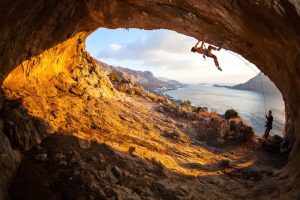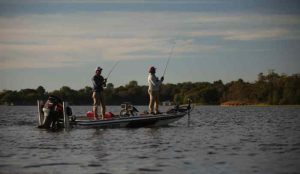
Embark on a melodious journey with Family-Friendly Music Festivals, where harmony meets happiness for all ages. Let’s explore the rhythm and beats that bring families together in a symphony of joy.
Discover the magic of music festivals tailored for families, where every note resonates with laughter and memories in the making.
Family-Friendly Music Festivals

Family-friendly music festivals are events that cater to people of all ages, with a particular focus on creating an inclusive and safe environment for families to enjoy music together. These festivals offer a variety of entertainment options and activities suitable for children, ensuring that the whole family can have a memorable experience.
Key Features of Family-Friendly Music Festivals
- Music Acts for All Ages: Family-friendly music festivals feature a diverse lineup of artists that appeal to different generations, ensuring there is something for everyone to enjoy.
- Safe and Secure Environment: These festivals prioritize safety measures and security to provide a worry-free experience for families attending the event.
- Family Zones: Dedicated family zones with activities like arts and crafts, storytelling, and games are set up to keep kids entertained and engaged.
- Kid-Friendly Facilities: Festivals often provide amenities like changing stations, quiet areas, and stroller rentals to cater to families with young children.
Importance of Activities for Children
Family-friendly music festivals understand the significance of including activities for children to ensure that parents can fully enjoy the festival experience without worrying about their kids getting bored or restless. By offering engaging and age-appropriate entertainment options, these festivals create a welcoming environment for families to bond and create lasting memories together.
Successful Family-Friendly Music Festivals
- Common People (UK): Held in Oxford and Southampton, Common People offers a diverse lineup of music acts along with activities for children, making it a popular choice for families.
- WOMAD (World of Music, Arts, and Dance): With events worldwide, WOMAD features a multicultural music lineup and dedicated kids’ zones, promoting cultural exchange and family-friendly entertainment.
- Austin City Limits Music Festival (USA): Known for its family-friendly atmosphere, ACL Festival provides a wide range of activities for children, including a dedicated area with interactive games and entertainment.
Shopping Vacation
When you combine the excitement of travel with the thrill of shopping, you get a shopping vacation. It’s a perfect way to explore new destinations while indulging in some retail therapy.
Popular Shopping Destinations
Some popular destinations known for their exceptional shopping experiences include:
- Tokyo, Japan: Known for its trendy fashion districts and unique boutiques.
- Paris, France: Home to high-end fashion houses and iconic department stores.
- Dubai, UAE: Famous for its luxurious malls and traditional markets.
- New York City, USA: Offers a mix of designer stores, vintage shops, and flagship stores.
Tips for Planning a Successful Shopping Vacation
- Research the best shopping areas in your destination before you go.
- Set a budget to avoid overspending and prioritize your must-buy items.
- Check for any local sales or events happening during your visit.
- Plan your itinerary wisely to maximize your shopping time without missing out on other attractions.
Benefits of Combining Leisure and Shopping
By combining leisure activities with shopping during your vacation, you can:
- Experience the local culture and lifestyle through shopping for unique items.
- Create lasting memories by exploring new places and indulging in retail therapy.
- Relieve stress and enjoy a well-rounded vacation that caters to your interests.
Arctic and Polar Expeditions
Embarking on Arctic and polar expeditions offers a truly unique and unforgettable experience for adventurous travelers. These remote regions are known for their breathtaking icy landscapes, diverse wildlife, and extreme weather conditions.
Challenges of Arctic Travel
- Extreme cold temperatures that can drop well below freezing, requiring specialized gear to stay warm and safe.
- Navigating through sea ice and unpredictable weather patterns, which can pose challenges for transportation and logistics.
- Potential encounters with polar bears and other wildlife, emphasizing the importance of safety protocols and precautions.
Rewards of Polar Expeditions
- Opportunities to witness the stunning Northern Lights (Aurora Borealis) painting the night sky with vibrant colors.
- Close encounters with majestic Arctic wildlife such as polar bears, whales, seals, and various bird species in their natural habitat.
- Exploring remote and untouched landscapes that few have had the chance to see, offering a sense of awe and wonder.
Safety Tips for Arctic Travel
- Always travel with experienced guides and follow their instructions to ensure your safety and well-being.
- Carry essential survival gear, including emergency communication devices, extra clothing layers, and high-energy snacks.
- Stay informed about weather conditions and be prepared for sudden changes in temperature or visibility.
Wildlife and Natural Beauty in the Arctic
The Arctic region is home to a wide variety of wildlife, including polar bears, Arctic foxes, reindeer, and beluga whales. Visitors can also witness stunning natural phenomena such as icebergs, glaciers, and vast tundra landscapes stretching as far as the eye can see.
Music Festival Tour
Embarking on a music festival tour allows music enthusiasts to experience the excitement of attending multiple festivals in various locations, creating a unique and unforgettable journey filled with live performances, diverse music genres, and vibrant atmospheres.
Advantages of Attending Multiple Music Festivals
- Opportunity to discover new music artists and genres.
- Immersive experience in different cultures and communities.
- Networking and connecting with fellow music lovers.
- Enjoying diverse food, art, and activities unique to each festival location.
Tips for Planning an Itinerary
- Research and choose festivals that align with your music preferences.
- Consider travel logistics such as transportation and accommodation in each location.
- Create a flexible schedule to allow for unexpected changes or additional festival discoveries.
- Stay informed about festival lineups, dates, and ticket availability to plan accordingly.
Must-Visit Music Festivals Around the World
- Coachella
-Indio, California, USA - Glastonbury Festival
-Pilton, UK - Tomorrowland
-Boom, Belgium - Rock in Rio
-Rio de Janeiro, Brazil - Primavera Sound
-Barcelona, Spain
Rainforest Exploration
Rainforests are incredibly diverse and lush ecosystems that offer a unique allure for explorers. The dense vegetation, vibrant wildlife, and tropical climate create an enchanting environment that draws in adventurers from around the world.
Biodiversity and Ecosystems
Rainforests are home to a vast array of plant and animal species, making them some of the most biodiverse regions on the planet. From towering trees to colorful birds to elusive big cats, the ecosystems found in rainforests are teeming with life. The interconnected relationships between species create a delicate balance that supports the overall health of the forest.
Sustainable Practices
When exploring rainforests, it is crucial to practice eco-friendly behaviors to minimize your impact on these sensitive environments. Some sustainable practices include staying on designated trails, avoiding single-use plastics, and supporting local conservation efforts. By treading lightly and respecting the natural surroundings, you can help protect these valuable ecosystems for future generations.
Safety Tips
Navigating through dense rainforest environments can be challenging, but with the right precautions, you can ensure a safe and enjoyable experience. Some safety tips for rainforest exploration include wearing appropriate footwear, staying hydrated, carrying essential supplies like a first aid kit and communication device, and being aware of potential hazards such as poisonous plants or wildlife. Always remember to respect the wilderness and be prepared for unexpected situations during your adventure.
Spiritual Pilgrimage
Embarking on a spiritual pilgrimage is a deeply personal and transformative journey for many individuals seeking a deeper connection with their faith, inner self, or a higher power. It often involves visiting sacred sites, seeking spiritual growth, and finding peace and meaning in one’s life.
Popular Destinations for Spiritual Pilgrimages Worldwide
- Mecca, Saudi Arabia: A significant pilgrimage site for Muslims, who are required to undertake the Hajj at least once in their lifetime.
- Varanasi, India: A holy city for Hindus, believed to be the oldest inhabited city in the world and a place of spiritual cleansing.
- Jerusalem, Israel: A sacred city for Christians, Jews, and Muslims, with sites like the Western Wall, Church of the Holy Sepulchre, and Dome of the Rock.
- Lourdes, France: A major Catholic pilgrimage site known for its healing waters and the Marian Apparitions.
Personal Stories and Testimonials
“Embarking on a spiritual pilgrimage to Varanasi was a life-changing experience. The energy and spirituality of the city touched my soul in ways I never thought possible.”
Tips for Planning and Preparing
- Research your chosen destination thoroughly to understand its significance and cultural practices.
- Prepare physically and mentally for the journey, as pilgrimages can be physically demanding and emotionally challenging.
- Respect local customs and traditions, showing reverence for the sacred sites you visit.
- Connect with other pilgrims or spiritual guides to enhance your experience and gain insights from their journeys.
Geotourism Adventure

Geotourism focuses on promoting tourism that preserves the environment, culture, and heritage of a destination. It encourages visitors to explore unique geological features, ecosystems, and local traditions while supporting sustainable practices.
Unique Geotourism Destinations and Experiences
Geotourism destinations offer one-of-a-kind experiences that highlight the natural beauty and cultural richness of a place. Some examples include:
- Visiting geological wonders like the Grand Canyon in the United States or the Great Barrier Reef in Australia.
- Exploring indigenous communities in the Amazon rainforest to learn about their traditional way of life and conservation efforts.
- Participating in eco-friendly tours to observe wildlife in their natural habitats, such as safari adventures in Africa or whale watching in Iceland.
Benefits of Promoting Sustainable Tourism through Geotourism
Promoting sustainable tourism through geotourism offers numerous benefits, including:
- Preservation of natural landscapes and ecosystems for future generations to enjoy.
- Supporting local communities by creating jobs, preserving cultural traditions, and promoting economic development.
- Encouraging responsible travel practices that minimize negative impacts on the environment and local cultures.
Geotourism Initiatives Impacting Local Communities
Several geotourism initiatives have positively impacted local communities around the world, such as:
- The Geoparks Network, which promotes the conservation of geological heritage and sustainable development in designated geoparks.
- The Maasai Mara in Kenya, where community-based ecotourism projects have empowered local Maasai tribes and contributed to wildlife conservation efforts.
- The Galápagos Islands in Ecuador, where strict regulations and sustainable tourism practices have helped protect the unique biodiversity of the region.
Birdwatching Vacation
Birdwatching as a vacation activity offers a unique opportunity to connect with nature, observe diverse bird species in their natural habitats, and enjoy the tranquility of the outdoors. It is a relaxing and educational experience that can be enjoyed by people of all ages and backgrounds.
Popular Birdwatching Destinations and Species
- Costa Rica: Known for its incredible biodiversity, Costa Rica is home to over 900 bird species, including the resplendent quetzal, scarlet macaw, and toucans.
- Galapagos Islands: A UNESCO World Heritage Site, the Galapagos Islands offer the chance to see unique species like the blue-footed booby, Galapagos penguin, and waved albatross.
- Kenya: With diverse habitats ranging from savannas to forests, Kenya is a paradise for birdwatchers, with species like the lilac-breasted roller, African fish eagle, and ostrich.
Tips for Beginner Birdwatchers
- Start by learning about common bird species in your area and their habits.
- Invest in a good pair of binoculars to enhance your birdwatching experience.
- Join local birdwatching groups or guided tours to learn from experienced birders.
- Be patient and observant, as birds can be elusive and may require keen eyesight to spot.
Equipment Needed for Birdwatching Vacation
- Binoculars: Essential for observing birds from a distance and identifying different species.
- Field Guide: A book or app with information on bird species, habitats, and behaviors.
- Camera: Capture memorable moments and unique bird sightings during your birdwatching adventures.
- Comfortable Clothing and Footwear: Dress appropriately for outdoor conditions and long periods of walking or hiking.
Remote Island Retreat
Imagine the allure of escaping to a remote island retreat, surrounded by pristine beaches, crystal-clear waters, and untouched nature. The idea of being far away from the hustle and bustle of everyday life, in a secluded paradise, is what draws many to seek out this type of experience.
The Benefits of Disconnecting from Technology on a Remote Island
- Opportunity to unwind and relax without distractions from constant notifications and emails.
- Chance to reconnect with nature and appreciate the beauty of the natural world.
- Ability to focus on mindfulness and mental well-being without the noise of technology.
Examples of Remote Islands Offering Unique Retreat Experiences
- Bora Bora, French Polynesia: Known for its overwater bungalows and stunning turquoise lagoons, Bora Bora offers a luxurious remote island retreat.
- Faroe Islands, Denmark: With rugged landscapes, waterfalls, and cliffs, the Faroe Islands provide a remote escape for nature lovers and hikers.
- Svalbard, Norway: Located in the Arctic Ocean, Svalbard offers a unique remote island experience with opportunities to see polar bears and witness the Northern Lights.
Tips for Planning a Memorable and Relaxing Island Retreat
- Research the island destination thoroughly to understand the local culture and activities available.
- Pack light and bring only essentials to minimize stress and maximize relaxation.
- Disconnect from technology as much as possible to fully immerse yourself in the island experience.
- Engage in outdoor activities such as hiking, snorkeling, or kayaking to make the most of your time on the island.
Volunteer Vacation
Volunteer vacations offer travelers the opportunity to make a positive impact on communities while exploring a new destination. These trips focus on giving back through various volunteer projects, such as conservation efforts, community development, or education programs. Participants not only contribute to meaningful causes but also gain a deeper understanding of local cultures and social issues.
Types of Volunteer Opportunities
- Conservation Projects: Help protect wildlife and natural habitats through activities like wildlife monitoring, reforestation, or marine conservation.
- Community Development: Assist in building schools, homes, or infrastructure in underserved communities to improve their quality of life.
- Education Programs: Teach English, support schools, or organize educational workshops to empower local residents and children.
- Healthcare Initiatives: Provide medical assistance, promote public health awareness, or work in clinics to improve healthcare access.
Personal Experiences
“My volunteer vacation in Costa Rica allowed me to work with a local sea turtle conservation project, where I helped protect nesting sites and educate visitors on the importance of conservation efforts.” – Sarah
“Volunteering in Ghana opened my eyes to the challenges faced by rural communities and the impact that sustainable agriculture projects can have on improving food security and livelihoods.” – David
Tips for Choosing a Reputable Volunteer Program
- Research Organizations: Look for well-established volunteer organizations with positive reviews and transparent program details.
- Verify Impact: Ensure the program has a meaningful and sustainable impact on the local community, with clear goals and outcomes.
- Cost Transparency: Understand all costs involved, including program fees, accommodation, meals, and transportation.
- Support and Safety: Choose programs that prioritize participant safety, provide adequate support, and offer orientation and training.
Farm Stay Vacation
Embarking on a farm stay vacation offers a unique opportunity to escape the hustle and bustle of city life and immerse oneself in the peaceful and picturesque setting of a working farm. Visitors can experience firsthand the daily rhythms of farm life, participate in farm activities, and enjoy the fresh air and natural beauty of the countryside.
Benefits of Experiencing Farm Life
- Gain a deeper appreciation for where your food comes from and how it is produced.
- Connect with nature and animals, providing a therapeutic and relaxing experience.
- Learn new skills such as gardening, animal care, and sustainable living practices.
- Support local farmers and sustainable agriculture practices by directly contributing to their livelihood.
Examples of Farms Offering Vacation Stays
- Dairy Farm B&B: A family-owned dairy farm in Vermont that offers cozy accommodations, farm-fresh breakfasts, and hands-on experiences milking cows and making cheese.
- Organic Vineyard Retreat: A vineyard in California that provides guests with the opportunity to participate in grape harvesting, wine-making workshops, and wine tastings.
- Ranch Adventure: A cattle ranch in Wyoming where visitors can try their hand at horseback riding, cattle herding, and enjoying campfire cookouts under the stars.
Tips for City Dwellers
- Research and choose a farm that aligns with your interests and comfort level, whether it’s a working farm, vineyard, or ranch.
- Pack appropriate clothing and footwear for outdoor activities and farm work.
- Be open to trying new experiences and learning about farm life from the locals.
- Respect the environment and follow any guidelines or rules set by the farm owners to ensure a pleasant stay for all guests.
Educational Vacation
Taking an educational vacation is a fantastic way to combine learning with travel, allowing you to explore new destinations while expanding your knowledge and skills. Whether you’re interested in history, culture, science, or the environment, there are plenty of opportunities to engage in educational activities while on vacation.
Benefits of Educational Vacations
- Gain a deeper understanding of a specific subject or destination.
- Enhance your skills and knowledge through hands-on experiences.
- Create lasting memories while learning something new.
- Opportunity to interact with experts and locals to gain unique insights.
- Broaden your perspective and worldview by immersing yourself in different cultures.
Examples of Educational Vacation Programs
- Archaeological digs in Greece where you can participate in excavations and learn about ancient civilizations.
- Language immersion programs in countries like Spain or Japan to improve your language skills while exploring the culture.
- Ecotourism trips to Costa Rica to study biodiversity and conservation efforts in the rainforest.
- Culinary tours in Italy where you can learn to cook traditional dishes and explore the local food scene.
Tips for Planning an Educational Vacation
- Identify your interests and goals to select a program or destination that aligns with what you want to learn.
- Research educational travel companies or organizations that offer specialized tours and activities.
- Consider your budget and time constraints when planning your educational vacation.
- Pack accordingly with any necessary equipment or materials for your learning experiences.
- Stay open-minded and be willing to engage with new ideas and perspectives during your educational journey.
Hiking and Trekking
Hiking and trekking are popular outdoor activities that offer a unique way to connect with nature, challenge oneself physically, and explore beautiful landscapes. Whether you are a beginner or an experienced hiker, there are countless trails and routes around the world that cater to all skill levels and preferences.
Popular Hiking and Trekking Destinations
- The Inca Trail in Peru: A famous trek leading to the ancient ruins of Machu Picchu.
- The Appalachian Trail in the United States: A long-distance trail spanning over 2,000 miles through the eastern U.S.
- The Tour du Mont Blanc in Europe: A stunning trek that circles the Mont Blanc massif through France, Italy, and Switzerland.
Safety Tips for Hiking
- Plan your route in advance and inform someone of your plans.
- Carry enough water, food, and essential supplies for the duration of your hike.
- Check the weather forecast and dress appropriately for the conditions.
- Stay on marked trails and follow all park regulations to minimize environmental impact.
Recommended Gear and Equipment
- Sturdy hiking boots with good ankle support.
- A comfortable backpack to carry essentials like water, snacks, and a first aid kit.
- Moisture-wicking clothing and layers to regulate body temperature.
- A map, compass, or GPS device for navigation.
Camping
Camping is a popular recreational activity that allows individuals to connect with nature, unwind, and create lasting memories in the great outdoors. Whether you prefer rustic tent camping or luxurious glamping, there are various types of camping experiences to suit your preferences and needs.
Types of Camping Experiences
- Rustic Tent Camping: Embrace the basics of camping by pitching a tent in a designated campsite, cooking over a campfire, and sleeping under the stars.
- RV Camping: Enjoy the comforts of home on the road by camping in a recreational vehicle equipped with amenities like beds, bathrooms, and kitchens.
- Glamping (Glamorous Camping): Indulge in a luxurious camping experience with accommodations like yurts, safari tents, or cabins that offer modern conveniences and upscale amenities.
Choosing the Right Camping Spot
Consider factors such as location, amenities, activities, and regulations when selecting a camping spot to ensure a safe and enjoyable experience.
Setting Up Camp
- Pack essential gear such as a tent, sleeping bags, camping stove, food, water, and first aid kit.
- Choose a level, dry, and well-drained area for pitching your tent to avoid discomfort and potential hazards.
- Follow Leave No Trace principles by respecting nature, minimizing impact, and leaving your campsite better than you found it.
Packing List for a Successful Camping Trip
- Tent and shelter
- Sleeping bags and sleeping pads
- Cooking supplies and utensils
- Clothing for various weather conditions
- Flashlights or headlamps
- Insect repellent and sunscreen
- Maps, compass, and navigation tools
- Portable water filter or purification tablets
- Trash bags for waste disposal
- Camping chairs and portable table
Cycling and Mountain Biking
Cycling and mountain biking are popular adventurous activities that offer a unique way to explore nature and stay active. Whether you prefer the thrill of speeding down a mountain trail or the leisurely pace of a scenic bike ride, both activities provide a great opportunity to connect with the outdoors.
Appeal of Cycling and Mountain Biking
Cycling and mountain biking appeal to adventure enthusiasts for several reasons. The adrenaline rush of navigating challenging terrains, the sense of freedom and exploration, and the physical health benefits make these activities exciting and fulfilling. Additionally, the opportunity to discover new landscapes and stunning views while getting a workout adds to the appeal of cycling and mountain biking.
Popular Cycling Routes and Mountain Biking Trails Worldwide
- The Great Divide Mountain Bike Route in North America offers a challenging and scenic ride along the Continental Divide.
- The Camino de Santiago in Spain is a popular cycling route that combines history, culture, and beautiful landscapes.
- The Alps in Europe provide numerous mountain biking trails with breathtaking views and diverse terrain for all skill levels.
- The Old Ghost Road in New Zealand is a renowned mountain biking trail that winds through remote wilderness and historic sites.
Tips for Beginners
- Start with easy trails to build confidence and skills.
- Invest in a quality bike that suits your riding style.
- Practice proper bike maintenance to ensure a safe and smooth ride.
- Join a local cycling group or club to learn from experienced riders and gain support.
Recommended Gear and Equipment
- A helmet for safety and protection.
- Comfortable cycling shoes with good grip.
- Padded cycling shorts for long rides.
- A hydration pack or water bottle to stay hydrated.
- A repair kit with essential tools for on-the-go fixes.
Fishing and Angling
Fishing and angling are popular recreational activities that offer a unique blend of relaxation and thrill. Whether you are casting a line into a serene lake or battling a fish in the open sea, there is a sense of excitement and peace that comes with the sport.
Popular Fishing Destinations
When it comes to popular fishing destinations known for abundant fish populations, places like Alaska, Florida Keys, Costa Rica, and Australia’s Great Barrier Reef come to mind. These locations offer a diverse range of fish species and environments, making them ideal for both beginners and seasoned anglers.
- Alaska: Known for its salmon runs and pristine wilderness, Alaska offers incredible fishing opportunities in rivers, streams, and coastal waters.
- Florida Keys: With its crystal-clear waters and coral reefs, the Florida Keys are a paradise for anglers looking to catch a variety of fish species, including tarpon, bonefish, and snapper.
- Costa Rica: Costa Rica’s rich marine ecosystem provides anglers with the chance to reel in big game fish like marlin, sailfish, and tuna.
- Australia’s Great Barrier Reef: The world’s largest coral reef system, the Great Barrier Reef is home to an abundance of fish species, making it a top destination for anglers seeking a unique fishing experience.
Fishing Techniques and Angling Practices for Beginners
For beginners looking to get started with fishing and angling, it’s essential to learn some basic techniques and practices to increase your chances of success. Here are some tips to help you get started:
- Learn how to cast a line properly and practice your casting technique in a safe and open area.
- Understand the types of fish you are targeting and the best bait or lures to use for each species.
- Patiently wait for a fish to bite and learn how to set the hook and reel it in effectively.
- Respect fishing regulations and practice catch-and-release when necessary to help conserve fish populations.
Sustainable Fishing Practices and Conservation Efforts
Sustainable fishing practices are crucial to preserving fish populations and maintaining the health of marine ecosystems. Anglers can contribute to conservation efforts by following guidelines such as:
“Practice catch-and-release for endangered or overfished species to help protect their populations.”
By using barbless hooks, handling fish with care, and supporting sustainable fishing practices, anglers can enjoy the sport while also helping to ensure the long-term health of our oceans and waterways.
Kayaking and Canoeing
Kayaking and canoeing offer a unique blend of tranquility and adventure on the water. Whether you prefer a leisurely paddle through scenic waterways or an exhilarating ride through rapids, these water activities provide a thrilling experience for all ages.
Scenic Waterways and Destinations
- Explore the crystal-clear waters of Lake Tahoe in California, surrounded by stunning mountain views.
- Paddle through the mangrove forests of Florida’s Everglades National Park, home to diverse wildlife species.
- Discover the breathtaking fjords of Norway, where you can kayak past towering cliffs and cascading waterfalls.
Safety Tips for Navigating Waters
- Always wear a life jacket and ensure it fits properly.
- Check weather conditions before heading out and avoid kayaking in strong winds or rough waters.
- Stay hydrated and protect yourself from the sun with sunscreen and a hat.
- Learn basic paddling techniques and how to perform a wet exit in case of capsizing.
Choosing the Right Kayak or Canoe
- Consider the type of water you’ll be paddling in – calm lakes, flowing rivers, or rough seas.
- Choose a kayak or canoe that suits your skill level, whether you’re a beginner or an experienced paddler.
- Decide on the size and weight capacity based on your body size and the gear you’ll be bringing along.
- Explore different kayak designs such as sit-on-top, recreational, touring, and whitewater kayaks to find the best fit for your adventure.
Rock Climbing and Bouldering
Rock climbing and bouldering are exhilarating outdoor activities that provide a unique combination of physical challenge, mental focus, and adrenaline rush. Whether scaling vertical cliffs or navigating challenging boulder problems, participants are pushed to their limits in terms of strength, balance, and problem-solving skills.
Locations for Rock Climbing and Bouldering
- Yosemite National Park, USA: Known for its iconic El Capitan rock formation, Yosemite offers a variety of climbing routes for all skill levels.
- Fontainebleau, France: A mecca for bouldering enthusiasts, Fontainebleau features thousands of sandstone boulders scattered throughout its picturesque forest.
- Joshua Tree National Park, USA: With its unique rock formations and desert landscapes, Joshua Tree provides a challenging and scenic climbing experience.
- Siurana, Spain: Located in Catalonia, Siurana offers limestone cliffs and stunning views, making it a popular destination for rock climbers.
Tips for Beginners
- Start with indoor climbing gyms to learn basic techniques and build strength before attempting outdoor climbs.
- Focus on footwork and body positioning to improve balance and efficiency while climbing.
- Learn to read climbing routes and anticipate handholds and footholds to plan your ascent effectively.
Safety Measures and Equipment
- Always climb with a partner or in a group to ensure safety and have a spotter when bouldering.
- Use proper climbing gear, including a helmet, harness, ropes, and climbing shoes, to minimize risks and prevent accidents.
- Check and double-check all equipment before climbing, and follow safety protocols for belaying and rappelling.
Wildlife Watching and Birding
Observing wildlife in their natural habitat and birdwatching can be incredibly rewarding experiences that connect us with nature and provide a sense of wonder and appreciation for the world around us.
Popular Wildlife Watching Destinations
- Costa Rica: Known for its rich biodiversity, Costa Rica offers opportunities to spot a wide variety of wildlife, including sloths, monkeys, and colorful bird species like toucans and hummingbirds.
- Kenya: The Maasai Mara National Reserve in Kenya is famous for its wildlife, including the Big Five (lion, leopard, elephant, buffalo, rhinoceros) and incredible birdwatching opportunities.
- Galapagos Islands: This unique archipelago is a hotspot for observing diverse marine life, giant tortoises, and an array of bird species found nowhere else on earth.
Tips for Ethical Wildlife Watching
- Respect wildlife by observing from a safe distance and never feeding or touching animals.
- Stay on designated trails to minimize impact on the environment and avoid disturbing habitats.
- Avoid using flash photography or making loud noises that could startle or stress wildlife.
Best Times for Wildlife Watching
- Spring: Many bird species are migrating or nesting during spring, making it an ideal time for birdwatching in various regions.
- Summer: In temperate climates, summer offers opportunities to see a wide range of wildlife, including mammals, birds, and insects.
- Fall: Fall can be a great time to witness wildlife preparing for winter, such as bear sightings before hibernation.
Trail Running
Trail running offers a unique blend of adventure, fitness, and connection with nature. Whether you’re a seasoned trail runner or a beginner looking to explore this exhilarating activity, there are endless opportunities to discover scenic routes and participate in races around the world.
Scenic Trail Running Routes and Races
- Experience the stunning landscapes of the Swiss Alps on the Ultra-Trail du Mont-Blanc.
- Explore the rugged terrain of the Grand Canyon on the Rim-to-Rim-to-Rim trail run.
- Discover the lush forests and waterfalls of the Pacific Northwest on the Trail Factor 50K in Oregon.
Tips for Beginners
- Start with shorter, less technical trails to build endurance and confidence.
- Focus on proper form and foot placement to prevent injuries on uneven terrain.
- Gradually increase your mileage and incorporate strength training to improve overall performance.
Gear and Equipment Recommendations
- Invest in a good pair of trail running shoes with durable treads for traction on varied surfaces.
- Carry a hydration pack or water bottle to stay hydrated during long runs in remote areas.
- Wear moisture-wicking clothing and consider layers for changing weather conditions.
Adventure Sports
Adventure sports are thrilling and exhilarating activities that involve a high degree of risk and excitement, appealing to adrenaline junkies and thrill-seekers. Participants are drawn to these extreme sports for the adrenaline rush, the sense of accomplishment, and the opportunity to push their limits both mentally and physically.
Skydiving
Skydiving is a popular adventure sport that involves jumping out of an airplane and free-falling before deploying a parachute to land safely on the ground. It provides a unique perspective of the world from above and an unmatched feeling of freedom.
Whitewater Rafting
Whitewater rafting involves navigating a river’s rapids in an inflatable raft, providing an exciting and sometimes turbulent experience. It requires teamwork, strength, and agility to navigate the fast-moving water and obstacles along the way.
Safety Tips for Adventure Sports
Always wear proper safety gear and equipment.
Follow instructions from experienced guides or instructors.
Know your limits and don’t take unnecessary risks.
Stay hydrated and be aware of weather conditions.
Mental and Physical Benefits
Participating in adventure sports can improve mental resilience, boost confidence, and increase problem-solving skills. It also enhances physical fitness, coordination, and endurance, leading to overall well-being and a sense of accomplishment.
Closing Summary
As the music fades and the memories linger, Family-Friendly Music Festivals promise a crescendo of shared experiences and unforgettable moments. From toe-tapping tunes to heartwarming melodies, these festivals orchestrate a harmony of family bonds that last a lifetime.
FAQ Guide
Are pets allowed at family-friendly music festivals?
Pets policies vary by festival, so it’s best to check with the event organizers beforehand. Some festivals may have designated pet-friendly areas.
Are there special ticket prices for children at family-friendly music festivals?
Most family-friendly music festivals offer discounted or free tickets for children under a certain age. Check the festival’s website for specific ticketing information.
Do family-friendly music festivals provide amenities for infants and toddlers?
Many family-friendly music festivals offer amenities such as diaper-changing stations, nursing areas, and stroller-friendly pathways to accommodate families with young children.
Can families bring their own food and drinks to family-friendly music festivals?
While some festivals allow outside food and drinks, others may have restrictions. It’s advisable to check the festival’s policies on outside food and beverages before attending.
Are there quiet zones or rest areas for families with children at music festivals?
Some family-friendly music festivals provide designated quiet zones or rest areas for families with children to take a break from the excitement and noise of the event.





